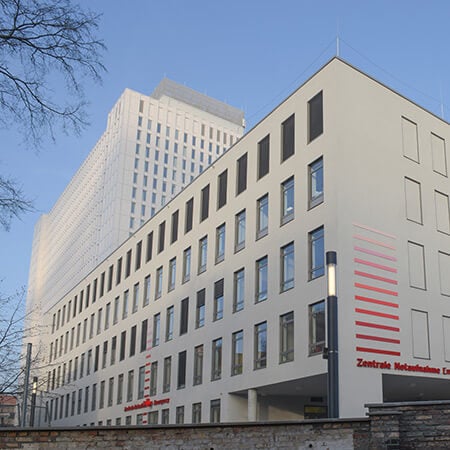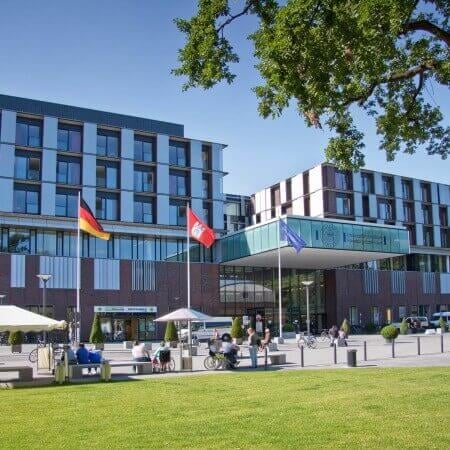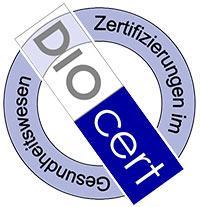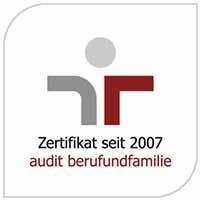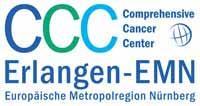A breast abscess is a purulent cavity in the mammary gland, the development of which is associated with bacterial inflammation. The risk of developing the disease is higher during breastfeeding. You can opt for your treatment of breast abscess in Germany, since hospitals in this country use not only classical surgical operations to eliminate the disease, but also minimally invasive procedures. You can get rid of your breast abscess once and for all, quickly, without any complications, and while maintaining your breast aesthetics. You can make an appointment for your breast abscess diagnostics and treatment in one of the specialized clinics in Germany using the Booking Health service.
Content
- Principles of treatment
- Surgical treatment
- Conservative therapy
Small breast abscesses are punctured with a thick needle to evacuate the pus, while large abscesses are opened surgically and drained. Patients also receive antibiotic therapy, which allows doctors to quickly cure the disease and reduce the risk of relapse.
You can undergo your treatment in one of the following hospitals: University Hospital Ulm, University Hospital Tuebingen, or Charite University Hospital Berlin.
The Booking Health company will take care of the organization of your trip if you book a clinic through our service. The Booking Health website presents up-to-date information about clinics, prices, and treatment methods. The company's employees will help you to make a choice, make an appointment on your preferred date, apply for a visa, get medical insurance, and get to the clinic. In the clinic, you will be accompanied by a medical interpreter, and for any questions, you can contact your personal coordinator.
Principles of treatment
The following manipulations are required for the successful elimination of the abscess:
- pus removal;
- destruction of pathogenic microorganisms that cause inflammation.
To achieve these goals, doctors combine conservative therapy with surgical treatment. The operation allows doctors to evacuate the pus, while antibiotics destroy the pathogens. To relieve pain in the mammary gland, symptomatic treatment is also carried out.
Additional treatment goals include the following:
- achievement of a good aesthetic outcome (preservation of the external attractiveness of the female breast);
- provision of a minimal risk of breast abscess recurrence;
- prevention of complications;
- maintenance of lactation in lactating women.
As a rule, the treatment is done on an outpatient basis. With large abscesses or systemic symptoms of the disease, for example, if sepsis is suspected, the patient may be hospitalized.
Surgical treatment
Both minimally invasive manipulations and surgical operations can be used for abscess treatment. The choice of treatment option depends on the size of the abscess and its origin. The operation is more reliable, but minimally invasive treatment provides less trauma and a better aesthetic outcome.
Needle aspiration is a minimally invasive treatment option for breast abscesses less than 3 cm or lactational breast abscesses. A doctor does not make any incisions, but inserts a thick needle through the skin into the cavity of the abscess, evacuates the pus and injects drugs. Non-lactational breast abscesses have a higher recurrence rate and often require multiple drainage procedures to achieve a definitive result. The main advantages of the procedure are minimal trauma and the preservation of breast aesthetics.
Opening and draining is a standard treatment option for breast abscesses larger than 3 cm. The procedure is more invasive than aspiration, but the recurrence rate after this operation is minimal. The doctor makes an incision several centimeters long, removes the pus, and leaves a drain in the wound to drain the inflammatory fluid. The technique has the following disadvantages: scarring, possible deterioration in the appearance of the breast, and a long rehabilitation period. But, for large and recurrent breast abscesses, this is the only possible treatment option.
If the cause of the breast abscess is a blocked or inflamed lactiferous duct, it may need to be surgically removed. With a lactational breast abscess, an infant should not be fed from this breast, in order to prevent the transmission of the infection to the child.
Conservative therapy
All patients with a breast abscess receive conservative treatment. Nonetheless, this cannot be the only treatment option, but is only an adjunct to surgery or a minimally invasive procedure.
A course of antibiotics can be prescribed before or after the breast abscess drainage procedure. There are many treatment options, and when choosing, doctors consider likely pathogens based on the patient's medical history. Doctors also take into account whether the woman is breastfeeding and whether the antibiotics are safe for breastfeeding mothers.
Initially, doctors administer antibiotics intravenously, and after the patient's condition improves, they switch to oral administration. The very first days of treatment, the causative agent of the infection is still unknown, so broad-spectrum antibiotics are preferred.
When aspirating pus with a needle or surgically draining an abscess, doctors obtain material for a bacteria culture test. A few days later, a bacteriological test shows which bacteria caused the abscess and which antibiotics they are sensitive to. This is especially important for recurrent breast abscesses. Based on the results of the antibiogram, the treatment regimen can be adjusted. The course of antibiotic therapy usually lasts 4-7 days.
You are kindly welcome to use the Booking Health service to undergo your breast abscess treatment in one of the specialized medical centers in Germany. On our website, you can see the cost of treatment and make your treatment appointment at the best price. The specialists of our company will help you to choose the most suitable clinics in Germany and take care of the organization of your trip abroad.
Authors:
This article was edited by medical experts, board-certified doctors Dr. Nadezhda Ivanisova, and Dr. Bohdan Mykhalniuk. For the treatment of the conditions referred to in the article, you must consult a doctor; the information in the article is not intended for self-medication!
Our editorial policy, which details our commitment to accuracy and transparency, is available here. Click this link to review our policies.
Sources:
National Institutes of Health
MedlinePlus
Google Scholar
